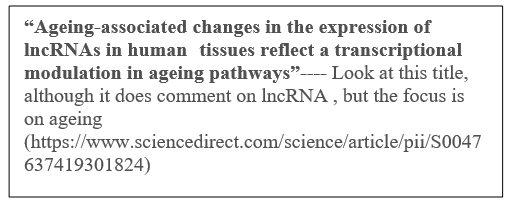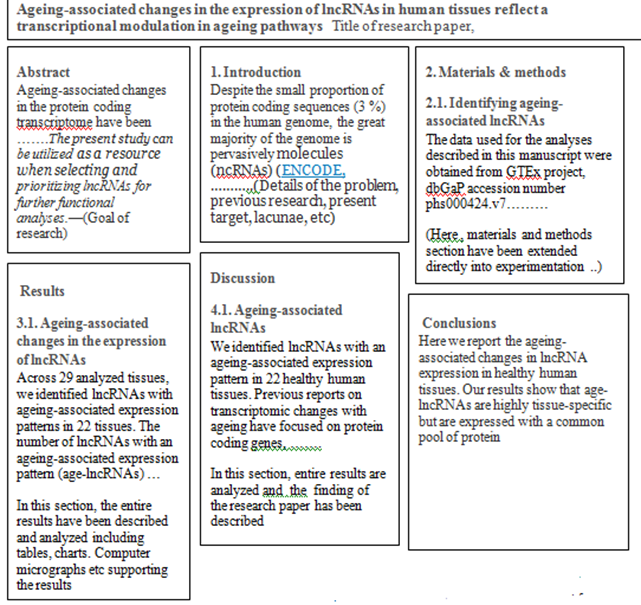
Five steps for comprehension of research papers on biological sciences for college students
College students undertaking Biology often face the demanding task of deciphering the in-depth information present in research publications. It can be an assignment as a part of the course to learn to understand, scan, and find a research paper's salient features. Such articles are usually taken from peer-reviewed journals. Your understanding of a peer-reviewed publication demands practice, patience, and training on what, where, and how to look into a research paper. This article will help you probe into research papers and skim out the preliminary information you can use later on in assignments or research.
A peer-reviewed research paper is a report targeted on the hypothesis of the problem concerned and is usually composed using a much more scientific terminology or modified language, and including experimental procedures sequentially arranged to lead to the conclusion. In case of any particular research, an extensive study, analysis, and references are required, both before the research, the start of research, and continually throughout the paper's research and writing. These references are vital in establishing the document's credibility and provide a holistic and global communication report on the research topic. It also provides the information on the present research methods and the validity of the research, the dependent variables, independent variables, and the extraneous variables, all of which need to be considered.
It is crucial to make the research paper comprehensible for the student through a sequential process which helps with clarity of information. This article aims to help college students understand and use the information to produce reports or summaries of research papers. Such practice is not only essential for their included course topics but also aids in content writing, summarizing research information, etc. in the future.
Although understanding and effectively utilizing a research paper's knowledge may seem like a daunting task initially, following sequential steps will make it easy and effective. For that purpose, we need to understand the components making up a research paper. Let’s start by analyzing a research paper.
Components of a research paper
You can either break your research paper down into specific features or subsections, or write continuous prose, depending on the journal's regulations, but you must include an abstract and a conclusion.
Abstract
An abstract is a short communication that highlights the main points of the research paper. The abstract body consists of background information of the research problem, including the general and the specific topic of the research. It also highlights the fundamental questions related to the research problem, the available information from previous examinations, and any omissions present in the knowledge base relating to the specific topic of research. Additionally, it points out the goal (hypothesis) of the study and the results obtained. Different journals may impose a word limit on each section but usually abstracts are about 250 words.
Introduction
The research paper's introduction provides detailed information of the background of the research with in-text citations and the research problem, the questions that were asked, and the exact rationale of approach towards the research topic and the specific research question. It emphasizes the lacunae of the research project and draws the reader's attention towards the importance of the research project under consideration and its implications.
Materials and methods / Research design
In the next section, the materials and methods section or the research design section rationally explains the different experiments to test the hypothesis. The experimental details include the instrumentation or kits used, and all components are presented in a replicable way.
Data collection
Although it may not be a separate heading, the research design is followed by the research's experimental data. The data are provided as tables, figures, images, or photographs of readouts of instruments used in this phase. This critically examines the data sets obtained, compared with the expected data, and then performs statistical analysis to test the data's statistical significance.
Results and analysis
The results section is one of the most critical areas of a research paper. This section validates the research, accepts or rejects the null hypothesis, and highlights the entire investigation's final findings. In this section, the data is analyzed most stringently to omit errors and conclude the research. The data obtained are critically examined, compared with the expected information, and then perform statistical analysis to test the statistical significance of the data obtained.
Discussion
This section is vital for a research paper since it bridges the missing links between the previous studies and their outcomes and compares and contrasts with the results and data sets of the research paper under consideration. In the process, this portion brings to light the different subtle aspects of divergence or convergence from or to the previous research information regarding the specific topic and then integrates all that information to produce the outcome of the research project to be established as a conclusion.
Conclusion
The Conclusion is the final section of the research paper that provides the holistic information on the research paper finding, whether the hypothesis was supported or rejected, or if the conclusions were in harmony with the expectations of the researchers. This section also sometimes points to future lines of research and which particular concerns need to be addressed in time.
This analysis of a research paper's basic structure will help you look into specific sections knowing what you can look for in the research paper. So now armed with the knowledge of parts of the article, let us focus on the mechanism of comprehending a research paper .
5 questions to make a research paper easy to decipher
A research paper demands, in-depth, careful reading for the full information to be understood. Naturally, since the research subjects are specified and run in great depths, one may find it less attractive or comprehendible if it is a different subject or a different domain of a topic with which one is unfamiliar.
Q1 what precisely the research paper is about?

At this initial stage, the primary objective that you should have is identifying the research paper‘s topic; there can be multiple papers on a particular topic, each highlighting a different aspect of the same topic. Thus if you are looking for the “effect of long coding RNAs on aging’’ make sure the words are in the heading or described otherwise since there can be thousands of papers on long non-coding RNA or lncRNA. Some documents can be about its properties, some on its effect in diseases, some on molecular biology, or immunology; you need to be sure to have the one(s) on aging and role of lncRNA. Although for the time being, let us consider that you have a peer-reviewed paper.
Q2 What s the aim or hypothesis of the research paper?
Finding the hypothesis or the research paper's aim is of fundamental importance since it should tally with your query. The research paper's objective or hypothesis is usually presented in the abstract section, which categorically states the research paper's purpose. There can be a single or more than one hypothesis or aims of the research paper.
Q3 What were the designs of experimentation in the research paper?
This search will provide you with the information on which experiments were done, why they were done, and the experiments' consequences. Understanding the exact procedure involved can be troublesome or difficult since a research protocol assumes a basic level of knowledge in the readers. If you have difficulty understanding the techniques, I suggest you note the names of the methods used and Google them for an explanation or a video. That way, if you become well conversant with the experimental techniques, it will be much easier to understand the results and the reason for the analysis in a particular way.
Q4 What are the results of the experiments?
In the next phase, clearly and thoroughly understanding the results of the experiments will help you to assess whether the claim or aim of the researcher has been met or not. It might not appear easy initially, but all you need to do is go through the section with focus and concentration. To help yourself, you can note the aims, research design, and results in points, which will help you assimilate the information.
Q5 What are the main points of conclusion and discussion?
In this section, you are already at the end of the research paper, and by now, you understand the last four significant pillars involved in the details of the article. The conclusion and its discussion will provide you with a comparative analysis of the research paper with other research conclusions, explanations in support of the result or otherwise. Once the concluding part of the research paper is gone through, it will provide a definite clarity and understanding of the article's efficacy, its level of complexity, and the authenticity of the document.
Thus, once you ask the five questions while analyzing or reading a research publication and finding out the answers to the questions, you will gain transparency and clarify the research problem, the aim of the research, the experimental design, and the conclusion of the results. If you continue to write the salient features as points, it will make it very easy and explainable in the long run.
Of course, like cycling or skiing, the initial part demands patience and focus. Once you get into practice, dealing with research papers will be a piece of cake.
Note: It is important to remember that handling research publications demands a basic understanding and knowledge of the specific topic under consideration.
Research report analysis: A professor’s point of view
So what would a professor like to see in your report of research paper analysis or a summary?
Well, for a start, the hypothesis or aim of the research, along with the context of the research topic, is most important. The professor wants to know whether you have correctly identified them or not and if your understanding of the research problem is correct.
Next will be experimentation, whether you have understood why those particular experiments were done, and the context of those specific research protocols.
Again, the results and the discussion of the research paper show why or how the results support the null hypothesis or the alternate hypothesis. Are the results sufficient to support the aim of the research? What do the results mean and what information do they convey? The professor might ask you to explain a selected table or a graph or a gel or an experiment to test your understanding.
What were the lacunae or drawbacks of the research? How would you have overcome the weakness or designed the experiment? He/she might also enquire about the dependent and independent variables, whether their selection has been appropriate,
If you need to annotate, then you need to write a brief note on each vitiation in the bibliography or reference page of the research article and explain the requirement Of that particular citation.
If you write a research paper, the professor would like to check whether the references are within the last five years and use appropriate formatting like APA.
Finally, the most critical aspect is whether you can express the research paper's salient features in your own words. Remember, it must be free of plagiarism under all circumstances.
In most cases, the students are provided with explicit instruction or given a rubric where all requirements are mentioned. Always keep in mind that research papers demand special care and attention , if you feel blocked initially, take a walk and return to check it out .Always remember that answers must be according to the question asked.

